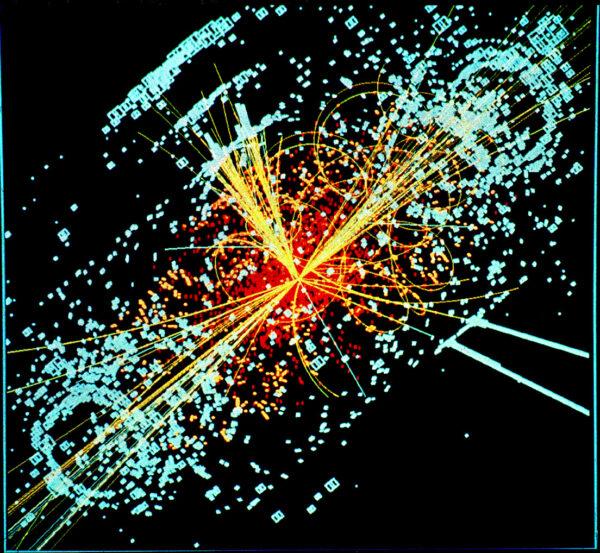An international team of scientists proposes a new heavy particle with properties similar to those of the Higgs boson

Credit: university of granada
Unlike the Higgs boson, discovered at CERN’s Large Hadron Collider in 2012 after a 40-year quest, the new particle proposed by these researchers is so heavy that it could not be produced directly even in this collider
The University of Granada is among the participants in this major scientific advancement in Theoretical Physics, which could help unravel the mysteries of dark matter
Scientists from the University of Granada (UGR) and the Johannes Gutenberg University Mainz (Germany) have recently published a study in which they endeavour to extend the Standard Model of particle physics (the equivalent of ‘the periodic table’ for particle physics) and answer some of the questions that this model is unable to answer. Such puzzles include: What is dark matter made of? Why do the various constituents of fermionic dark matter have such different masses? Or, why is the force of gravity much weaker than electromagnetic interaction?
This work, published in the European Physical Journal C, is based on the existence of a dimension in spacetime that is “so small that we can only detect evidence of it through its indirect effects,” explains one of the authors of the article, Adrián Carmona, Athenea3i Fellow at the UGR and a member of the Department of Theoretical Physics and the Cosmos.
As early as the 1920s, in an attempt to unify the forces of gravity and electromagnetism, Theodor Kaluza and Oskar Klein speculated on the existence of an extra dimension beyond the familiar three space dimensions and time (which, in physics, are combined into a 4-dimensional spacetime).
Such models became popular in the 1990s, when theoretical physicists realized that theories with curved extra dimensions could explain some of the major mysteries in this field. However, despite their many strengths, such models generally lacked a viable dark-matter candidate.
Now, more than 20 years later, Adrián Carmona and collaborators from the University of Mainz, Professor Matthias Neubert and doctoral student Javier Castellano, have predicted the existence of a new heavy particle in these models with properties similar to those of the famous Higgs boson.
A new dimension
“This particle could play a fundamental role in the generation of masses of all the particles sensitive to this extra dimension, and at the same time be the only relevant window to a possible dark sector responsible for the existence of dark matter, which would simultaneously solve two of the biggest problems of these theories that, a priori, appear disconnected,” explains the UGR researcher.
However, unlike the Higgs boson, which was discovered at CERN’s Large Hadron Collider in 2012 after a 40-year quest, the new particle proposed by these researchers is so heavy that it could not be produced directly even in this, the highest-energy particle collider in the world.
In the article, the researchers explore other possible ways of discovering this particle by looking for clues about the physics surrounding a very early stage in the history of our universe, when dark matter was produced.
###
Bibliography:
Carmona, A., Castellano Ruiz, J. & Neubert, M. (2021) ‘A warped scalar portal to fermionic dark matter’, Eur. Phys. J. C 81, 58. https:/
https:/
Media Contact
Adrián Carmona Bermúdez
[email protected]
Original Source
https:/
Related Journal Article
http://dx.




